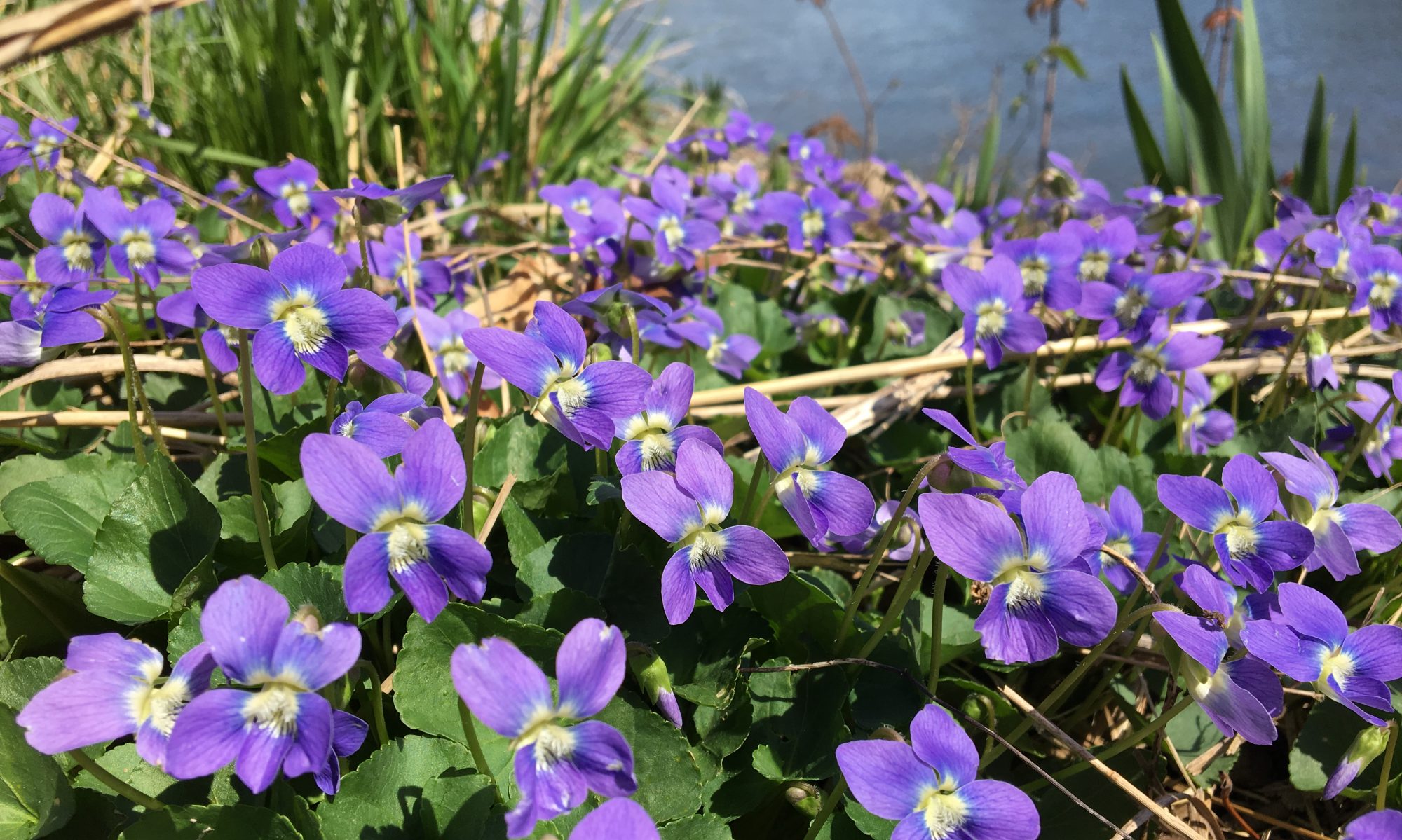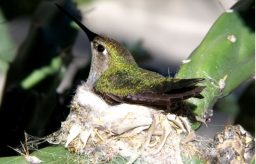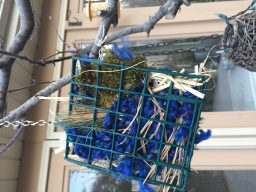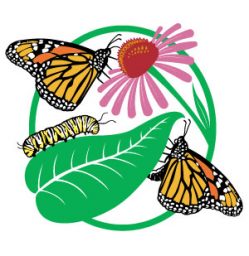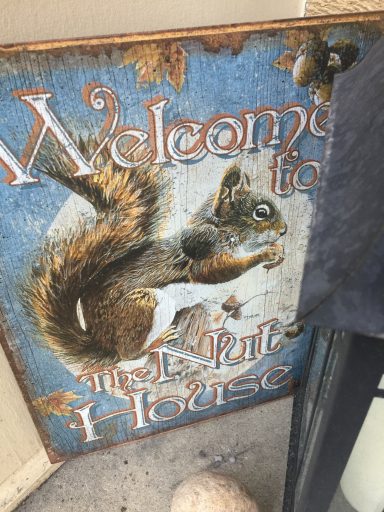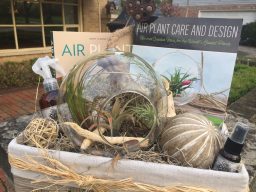 This lovely Air Plant themed gift basket, designed by our members Laura Christensen and Cheryl Weber will be auctioned off at the GCI Luncheon as part of their fundraising efforts.
This lovely Air Plant themed gift basket, designed by our members Laura Christensen and Cheryl Weber will be auctioned off at the GCI Luncheon as part of their fundraising efforts.
My Greenhouse
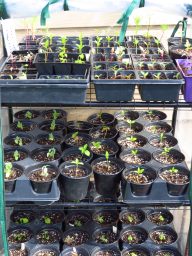 My greenhouse is full!
My greenhouse is full!
Library Flowers
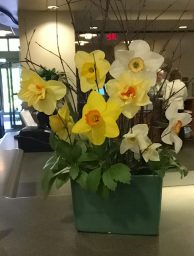
Cheryl’s Tip of the Month – April 2017
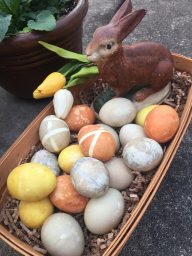 How to Dye Eggs Naturally
How to Dye Eggs Naturally
Add separately to 2 quarts water any of the following natural items:
3 cut up beets—makes brownish eggs
Onion skins from 6 yellow onions—makes orange eggs
1 large or 2 small red cabbages—makes green eggs
4 Tablespoons ground Tumeric—makes yellow eggs
One small bag of frozen blueberries—makes blueish eggs
In separate pots, bring water and “natural item” to boil. Boil for several minutes. Take off heat and cool completely. Add 2 tablespoons white vinegar to pot(s). Add previously hard boiled eggs to dye mixtures. Let sit for several hours or overnight depending on how deep you want the color to dye the eggs. Remove eggs and dry off before storing in cool place until ready to use.
To add a pattern to the eggs, you can wrap rubber bands or string around the eggs prior to dropping in the dye mixes.
Try experimenting with other “natural items”. The rule of thumb is: if it can leave a stain, you can use it as a dye. Enjoy!
Horticulture Report – April 2017
“In the spring I have counted one hundred and thirty-six different kinds of weather inside of four and twenty hours.”
– Mark Twain
• Apply organic matter, compost, and manure to soil.
• Seed cool-season vegetables outside, such as peas, lettuce, carrots, broccoli, Brussels sprout, Swiss chard, kale, onions, parsley and spinach.
• Cover tender plants if late frost is in the forecast.
• Plants started indoors should be hardened off outdoors in cold frames.
• Begin fertilizing houseplants again.
• Clean up your garden. Rake up any leaves, remove winter mulch, remove any dead plants, and mix in compost in your garden soil.
• As long as the ground in workable and not too wet, you can apply spring grass seed. You can also begin to fertilize the lawn.
• Fertilize roses, raspberries, and woody plants.
• Mow your ground covers to remove any winter damage. Fertilize and water the ground covers to encourage growth.
• Finish pruning.
• Apply horticultural oil to trees and shrubs that had insect issues last year.
• Prune spring-blooming shrubs, such as forsythia, after they have finished flowering.
• Divide perennials that are overcrowded.
Christmas Luncheon Photos
March Tip of the Month
HOW TO OFFER BIRD-NESTING MATERIALS IN YOUR GARDEN
Spring is here, and birds around the world—and in your backyard—are turning into construction crews. It’s nesting time!
Many songbirds are master builders, putting together intricately made weavings of twig and leaf, stem and fluff, hair and moss. Some nests, like the Baltimore oriole’s, will hang from a tree branch like a small tote bag. Others, like the robin’s, are cups bristling with twigs painstakingly collected one or a few at a time. Even if you provide birdhouses in your garden, the birds that occupy them will build nests in them.
So, what can you do about it? Well, you can provide nesting material of a wide variety of types that appeal to a wide variety birds. Continue reading “March Tip of the Month”
Horticulture Report – March 2017
“Spring is the time of year when it is summer in the sun and winter in the shade.”
Charles Dickens-Great Expectations
It’s not hard to see the signs of Spring all around. I’ve seen my first Robin. There are buds on the trees and tulip, sedum and daffodil greens are poking through the dirt. Your Hellebores might even be in bloom. But March is a guessing game in the Midwest garden. It’s warm one day and snowing the next. About the only thing we can count on is unpredictability of March. So go ahead-get outside and check out what is happening in the garden!
• Everyone should have their seeds started!
• Everyone should be getting your tools ready to go. Continue reading “Horticulture Report – March 2017”
Letter from DuPage Monarch Project
Dear Garden Club Board and Members,
Have you noticed fewer monarchs visiting your garden? You’re not alone. Concern is growing that the eastern monarch is imperiled and the US Fish and Wildlife Service is currently looking into whether it qualifies as an endangered species.
This is the year gardeners can take giant steps towards saving the monarch, the beautiful summer visitor that has been adding excitement to gardens for years. I’m writing to invite you to join us in protecting our beloved state butterfly. Continue reading “Letter from DuPage Monarch Project”
Horticulture Report – February 2017
If you can’t beat them, might as well enjoy them
There really is a National Squirrel Appreciation Day every January 21st.
Appreciating these adorable mammals that scamper around cities, suburbs, parks, and forests may need an attitude adjustment especially if you’re plagued by squirrels squatting in your attic or squirrels totally unbaffled by the baffle of your backyard bird feeder. But these animals definitely have a good side
Amazing Facts About the Squirrel
• There are over 265 species of squirrel worldwide. The smallest is the African pygmy squirrel which is tiny at around 10 cm long, whereas the largest, the Indian giant squirrel is a massive three feet long. Continue reading “Horticulture Report – February 2017”
